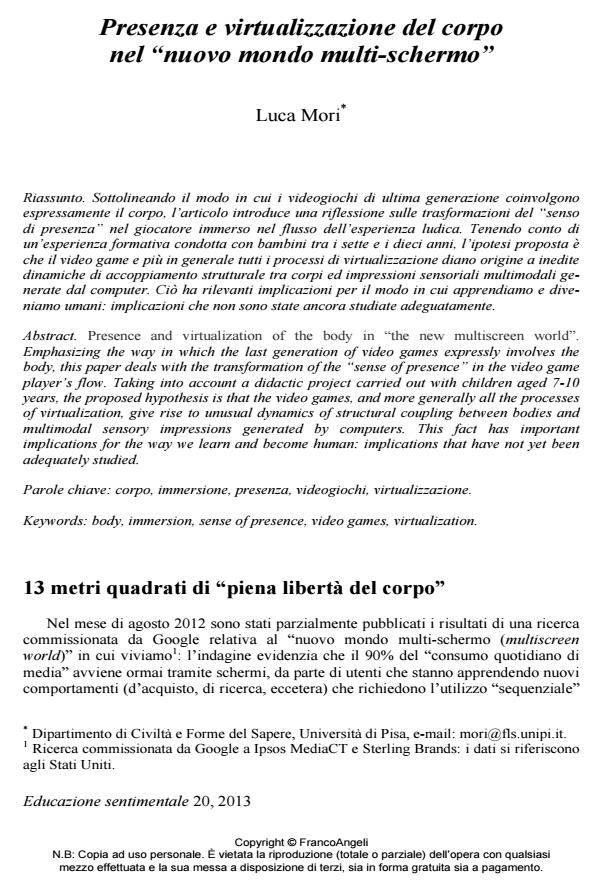Presenza e virtualizzazione del corpo nel "nuovo mondo multi-schermo"
Journal title EDUCAZIONE SENTIMENTALE
Author/s Luca Mori
Publishing Year 2013 Issue 2013/20
Language Italian Pages 14 P. 53-66 File size 669 KB
DOI 10.3280/EDS2013-020006
DOI is like a bar code for intellectual property: to have more infomation
click here
Below, you can see the article first page
If you want to buy this article in PDF format, you can do it, following the instructions to buy download credits

FrancoAngeli is member of Publishers International Linking Association, Inc (PILA), a not-for-profit association which run the CrossRef service enabling links to and from online scholarly content.
Presence and virtualization of the body in "the new multiscreen world". Emphasizing the way in which the last generation of video games expressly involves the body, this paper deals with the transformation of the "sense of presence" in the video game player’s flow. Taking into account a didactic project carried out with children aged 7-10 years, the proposed hypothesis is that the video games, and more generally all the processes of virtualization, give rise to unusual dynamics of structural coupling between bodies and multimodal sensory impressions generated by computers. This fact has important implications for the way we learn and become human: implications that have not yet been adequately studied.
Keywords: Body, immersion, sense of presence, video games, virtualization.
Luca Mori, Presenza e virtualizzazione del corpo nel "nuovo mondo multi-schermo" in "EDUCAZIONE SENTIMENTALE" 20/2013, pp 53-66, DOI: 10.3280/EDS2013-020006